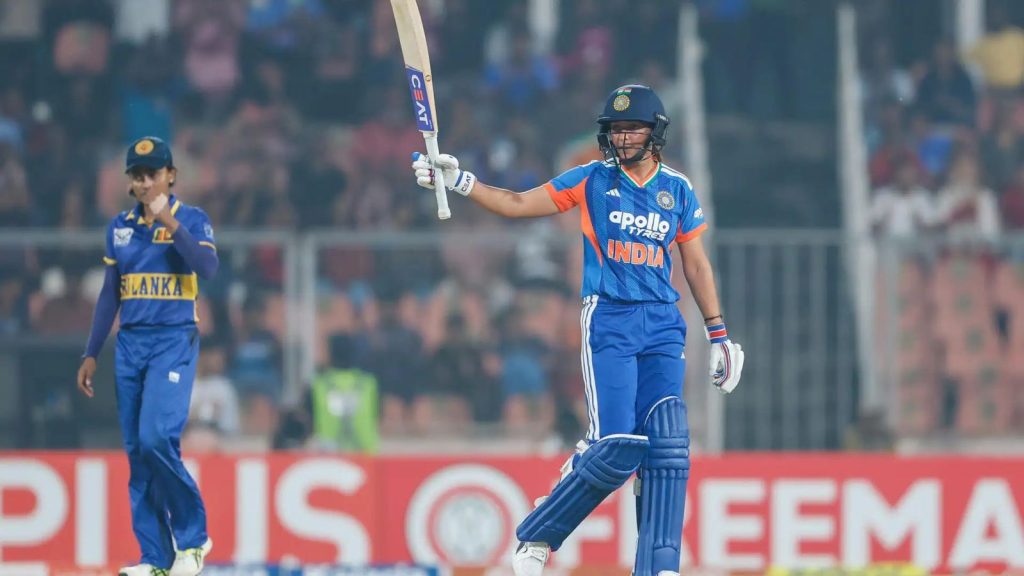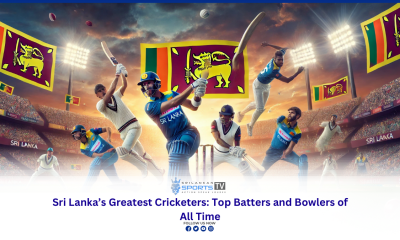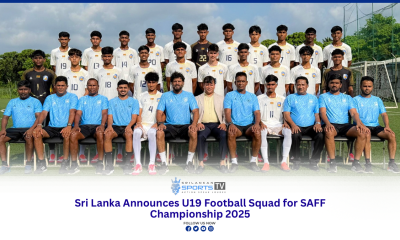News
05 Greatest Trophies Across Different Sports
- FIFA World Cup Trophy

- Awarded For: Winning Football World Cup
- Made of: 18-carat gold
- Introduced in: 1974 FIFA World Cup
- Designer: Stabilimento Artistico Bertoni (Italy)
The trophy is given to the World Cup-winning team every four years, the “FIFA World Cup Trophy” is made of gold and it replaced the first world cup trophy called “Jules Rimet Trophy” after the 1970 world cup. It was first introduced in the 1974 world cup and made of pure 18-carat gold and weighs around 6.1 kilograms. Its design feature two human bodies holding earth”.
2. The Ashes (Cricket)

- Awarded for: Winner of annual 5 test match series between England-Australia
- Made of: terracotta and contains a burnt bail
- Introduced in: 1883-84 test series between England-Australia
Early history accounts vary but its widely considered that after 1882 test series win by Australia in England. British newspaper “Sporting times” published an article about “death of cricket in England and Ashes set to be taken to Australia” referring to Australia win against England. A year later when England travel to Australia for the test series, English captain vowed to take back the Ashes.
3. Wimbledon (Men’s singles Tennis)

- Awarded For: Men’s singles winner
- Made of: Silver Gilt, Height 18 inches
- Introduced in: first presented by All England Club in 1887, it replaced the Field Cup used in previous 6 years.
First ever Wimbledon Championship took place in 1877 and a trophy called “Field Cup” was awarded to the winner of men’s singles event. But William Renshaw won three titles in a row twice hence keeping the “field cup (1877-83) and Champions Cup (1984-86). That prompted All England Club to present a new trophy to the winner which was made of silver gilt and it was decided that players cannot keep the trophy no matter how many times they win the event.
4. Webb Ellis Cup (Rugby)
- Awarded For: Winning Rugby Union World Cup
- Made of: Gilded silver, weights around 4.5 kg
- Introduced in: 1987 Rugby World Cup
- Designer: Carrington & Co. of London designed the original trophy back in 1906
The Webb Ellis Cup was introduced in the first Rugby Union World Cup and awarded to the winner. The trophy used was actually a historic silverware made back in 1906 by Carrington and Co of London. When Rugby World Cup 1987 was announced, secretary of International Rugby Federation set off on finding an appropriate trophy for the world cup and he visited “Garrard & Co” Jewelers in London where this trophy was shown to him. He liked the design and presented it to Rugby countries participating in the first every world cup.
5.Stanley Cup (NHL)
- Awarded For: Winning playoffs in National Hockey League (NHL)
- Made of: Silver and nickel alloy, weighs at around 15.5 kilograms
- Introduced in: 1893 for the best amateur ice hockey team in canada
- Designer: Named after Lord Stanley, who brought a simple rose-bowl which was made in Sheffield England and used it as a trophy awarded to Canada’s best amateur hockey team every year.
Stanley Cup has a rich history and it is named after its very first owner Lord Stanley who was the governor of Canada in last 1880’s to early 1990’s. He was ICE Hockey enthusiast. Lord Stanley alongside his family played a key role in Ice Hockey development in Canada starting an yearly amateur “Dominion Hockey Challenge Cup”.
Cricket
Sri Lanka Announce Dasun Shanaka-Led Squad for Pakistan T20 Series
Sri Lanka have announced a strong and well-balanced squad led by Dasun Shanaka for the upcoming three-match T20 International series against Pakistan, which is set to begin tomorrow in Dambulla.
The selection reflects a blend of experience and emerging talent, as the selectors look to combine stability with attacking intent in the shortest format. Shanaka will continue to lead the side, with his leadership, calm decision-making, and power-hitting expected to play a central role in Sri Lanka’s campaign.
The batting unit features depth and versatility. Pathum Nissanka and Kamil Mishara provide options at the top of the order, while Kusal Mendis and Kusal Perera bring proven international experience and match-winning ability to the middle order. Dhananjaya de Silva and Charith Asalanka add further flexibility, offering the ability to adapt their roles according to match situations.
Sri Lanka’s all-round strength remains a key asset, with Wanindu Hasaranga, Kamindu Mendis, Dunith Wellalage, and Shanaka himself providing balance to the side. Hasaranga, in particular, is expected to play a decisive role with both bat and ball, especially during the middle overs.
The bowling attack offers a strong mix of spin and pace. Maheesh Theekshana’s variations will be vital on home surfaces, supported by Dushan Hemantha and Wellalage. The pace department is bolstered by the presence of Dushmantha Chameera, Matheesha Pathirana, Nuwan Thushara, Eshan Malinga, and Traveen Mathew, giving Sri Lanka a range of options in terms of speed, movement, and death-over execution.
Janith Liyanage provides additional batting cover, while the overall squad depth allows the team flexibility to rotate players and manage workloads across the series.
With home advantage on their side, Sri Lanka will be aiming to make a strong start and build momentum against a competitive Pakistan side as preparations continue for future international assignments.
Sri Lanka T20 Squad vs Pakistan
Pathum Nissanka, Kamil Mishara, Kusal Mendis, Kusal Perera, Dhananjaya de Silva, Charith Asalanka, Dasun Shanaka (Captain), Janith Liyanage, Kamindu Mendis, Wanindu Hasaranga, Dunith Wellalage, Maheesh Theekshana, Dushan Hemantha, Traveen Mathew, Dushmantha Chameera, Matheesha Pathirana, Nuwan Thushara, Eshan Maling
Cricket
Sanath Jayasuriya to Step Down as Sri Lanka Head Coach After T20 World Cup 2026
Sri Lanka head coach Sanath Jayasuriya has confirmed that he will step down from his role following the ICC Men’s T20 World Cup 2026, bringing clarity to ongoing speculation surrounding his future with the national team.
Although Jayasuriya’s current contract with Sri Lanka Cricket (SLC) extends beyond the World Cup, multiple media reports indicate that he has already taken a personal decision not to continue in the role after the tournament.
Coaching Journey and Key Milestones
Jayasuriya’s tenure as national head coach began in July 2024, when he was appointed interim head coach ahead of a demanding home series against India. That appointment proved pivotal, as Sri Lanka went on to record a historic ODI series victory over India, their first in several decades. The result prompted Sri Lanka Cricket to confirm Jayasuriya as full-time head coach later that year.
Prior to taking over the national side, Jayasuriya had been involved with Sri Lanka Cricket as a consultant at the National High Performance Centre since December 2023, contributing to player development and long-term planning.
Record and Performance Overview
Under Jayasuriya’s leadership, Sri Lanka have played 60 international matches across all three formats, registering 29 wins and 29 losses, with two no results. The numbers reflect a transitional phase for the team, marked by rebuilding, experimentation, and gradual progress rather than consistent dominance.
While the team has shown improvement in Tests and ODIs, Jayasuriya has acknowledged that T20 cricket remains an area requiring further refinement, particularly in maintaining batting momentum and executing disciplined bowling during decisive phases of matches.
Focus on World Cup Preparation
Looking ahead, Jayasuriya has highlighted upcoming home series against Pakistan and England as crucial preparation opportunities ahead of the T20 World Cup. He believes these contests will allow Sri Lanka to finalise player combinations, sharpen tactical decision-making, and test performances under pressure in familiar conditions.
Jayasuriya’s connection with Sri Lanka’s World Cup success is deeply rooted. He was Player of the Tournament during Sri Lanka’s iconic 1996 ODI World Cup victory and later served as Chairman of Selectors when the national team lifted the 2014 T20 World Cup. Now, he is aiming to contribute to a potential third World Cup triumph, this time from the coach’s chair.
SLC Response and Future Outlook
Sri Lanka Cricket Chairman Shammi Silva has publicly expressed satisfaction with Jayasuriya’s work, praising his hands-on coaching approach and close engagement with players. Speaking at a recent media briefing, Silva stated that formal discussions regarding Jayasuriya’s future will take place after the T20 World Cup, leaving open the possibility of an extension should circumstances permit.
In a separate development, Silva also confirmed that Sri Lanka Cricket plans to appoint a foreign head coach for the national women’s team, marking a shift from the current setup under local coach Rumesh Ratnayake. The move forms part of a broader strategy to further professionalise and strengthen the women’s cricket programme.
As Sri Lanka build toward the 2026 T20 World Cup on home soil, Jayasuriya’s remaining tenure is expected to focus on consolidation, clarity, and competitive readiness — with his legacy to be assessed once the global tournament concludes.
Cricket
Harmanpreet Leads from the Front as India Women Seal 5–0 Clean Sweep Over Sri Lanka
India Women capped off a dominant tour with another composed performance, defeating Sri Lanka Women by 15 runs in the fifth and final T20I to complete a 5–0 clean sweep of the series. The result underlined India’s superiority throughout the tour, as they consistently controlled key phases of play and delivered under pressure.
Batting first, India Women posted an imposing 175 for 7 from their 20 overs. The innings was anchored by captain Harmanpreet Kaur, who led from the front with a commanding 68 off 43 balls. After early setbacks that saw Shafali Verma, Gunalan Kamalini and Harleen Deol depart inside the powerplay, India required stability — and Harmanpreet provided exactly that.

The skipper rotated the strike efficiently before accelerating with authority, striking nine boundaries and a six to maintain momentum. Support came in patches, with Amanjot Kaur contributing a useful 21, but it was the late surge that lifted India to a formidable total. Arundhati Reddy produced a stunning cameo, remaining unbeaten on 27 from just 11 deliveries, her clean striking in the death overs decisively shifting momentum in India’s favour.
Among the Sri Lankan bowlers, Kavisha Dilhari and Chamari Athapaththu were the standouts, claiming two wickets apiece, but the attack struggled to contain India in the closing stages.
Chasing 176, Sri Lanka Women responded with intent and determination. Hasini Perera starred at the top of the order with a fluent 65 off 42 balls, while Imesha Dulani compiled a composed 50, keeping the chase alive with a crucial partnership that threatened to tilt the contest.
India, however, showcased their experience and composure. Timely breakthroughs in the middle overs stalled Sri Lanka’s momentum, with Deepti Sharma, Sneh Rana, Vaishnavi Sharma and Shree Charani all making important contributions with the ball. Sharp fielding — highlighted by a crucial run-out — further tightened India’s grip on the match.
Despite a late push from Rashmika Sewwandi, Sri Lanka finished on 160 for 7, falling 15 runs short of the target.
The victory sealed a comprehensive 5–0 series whitewash for India Women, reflecting their consistency, squad depth, and tactical clarity throughout the series. Harmanpreet Kaur’s leadership and match-winning performance in the final game perfectly encapsulated India’s dominance as they closed the tour on a resounding high.
Brief Scores
India Women 175/7 in 20 overs
Harmanpreet Kaur 68 (43), Arundhati Reddy 27* (11)
Kavisha Dilhari 2/11, Chamari Athapaththu 2/21
Sri Lanka Women 160/7 in 20 overs
Hasini Perera 65 (42), Imesha Dulani 50 (39)
Deepti Sharma 1/28, Sneh Rana 1/3
-

 Football11 months ago
Football11 months agoSri Lanka Schools National Championship 2025: Super 8 Fixtures and Grouping
-

 News12 months ago
News12 months ago2025 Schools Rugby Season Set to Thrill Fans with Knockout and League Action
-

 Cricket8 months ago
Cricket8 months agoNuwan Thushara Shines as RCB Storms into IPL 2025 Final
-

 Live4 years ago
Live4 years agoLive Broadcast of Syria vs Sri Lanka | AFC U23 Asian Championship Qualification
-

 News8 months ago
News8 months agoMajor Shake-Up in Sports Governance: New 2025 Regulations Reform National Sports Bodies in Sri Lanka
-

 Football12 months ago
Football12 months agoFFSL Rebrands Division-1 as ‘League-One’ with a Bold New Vision
-

 Cricket12 months ago
Cricket12 months agoSri Lanka’s Greatest Cricketers: Top Batters and Bowlers of All Time
-

 Football8 months ago
Football8 months agoSri Lanka Announces U19 Football Squad for SAFF Championship 2025







